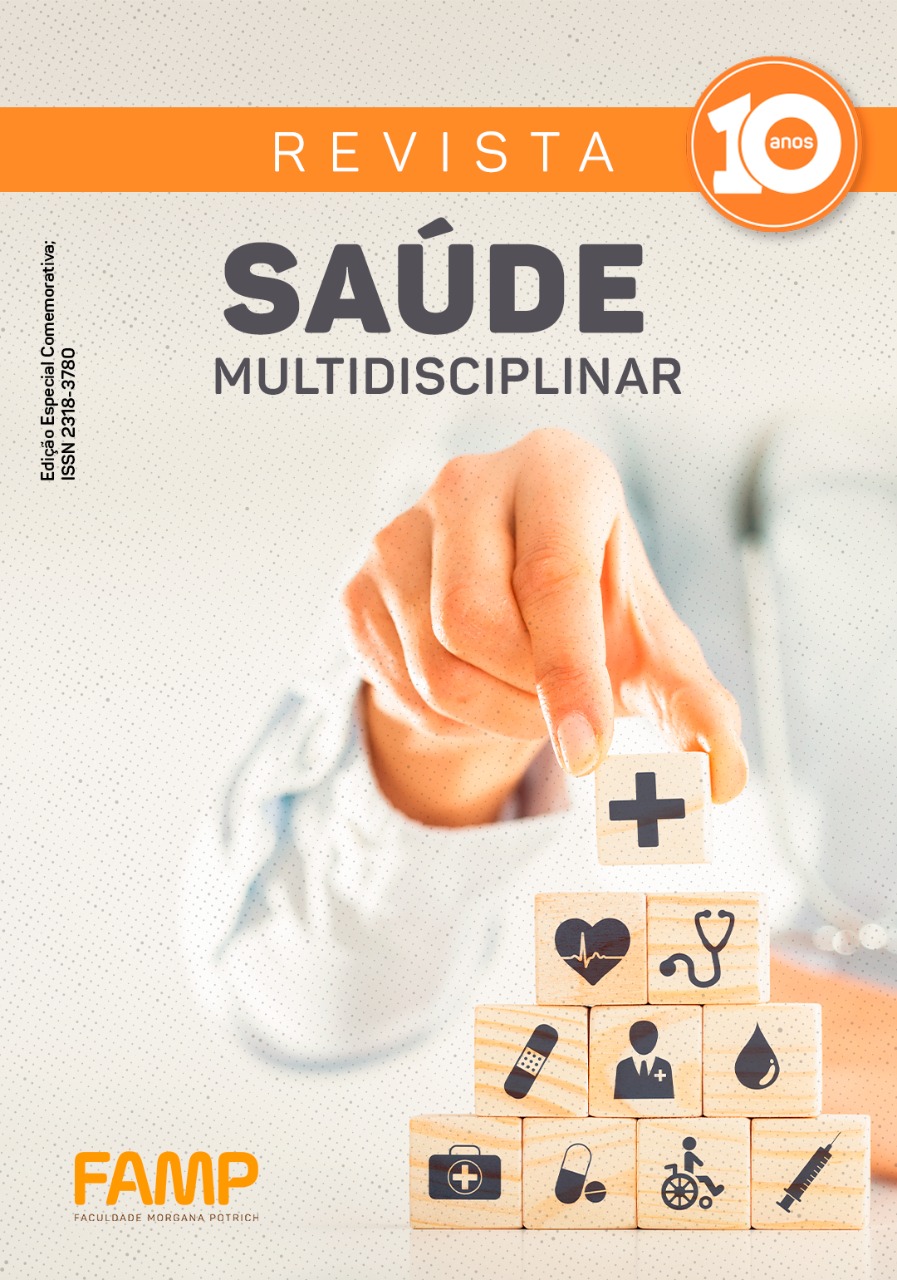O BENEFÍCIO DA REABILITAÇÃO FISIOTERAPÊUTICA UTILIZANDO A TÉCNICA DA TERAPIA POR CONTENSÃO INDUZIDA A ELETROESTIMULAÇÃO MUSCULAR E BANDAGEM FUNCIONAL EM PACIENTE PÓS-ACIDENTE VASCULAR ENCEFÁLICO: RELATO DE CASO
DOI:
https://doi.org/10.53740/rsm.v12i2.586Keywords:
Acidente vascular Cerebral, Reabilitação, Terapia por Contensão Induzida, Estimulação Elétrica, kinesio Taping.Abstract
Stroke is an interruption of blood flow to the brain causing damage to neurological function. The induced restraint technique aims to stimulate motor function. Functional electrical stimulation (FES) has the function of providing stimulation for the recovery of motor functionality, promoting an increase in muscle strength. Kinesio Taping Tape helps to improve movement by acting and stimulating muscle mobility. Objective: To describe the benefits of physical therapy rehabilitation using the technique of restraint therapy induced by muscle electrostimulation and kinesio taping in a post-stroke patient. Method: This is a case study, carried out from the physical therapy evaluation, in which an intervention protocol was developed for an individual who underwent 10 physiotherapy sessions lasting 60 minutes, using Kinesio Taping, FES Electrostimulation, active exercises for increase in strength and range of motion with induced restraint therapy in front of the mirror for postural correction. Results: An increase in the range of motion of the lower limbs, improvement in fine motor coordination, improvement in the execution of wrist and finger movements, and improvement in the reduction of motricity of the muscles of the right hemiface were observed. Conclusion: through the results presented, it was possible to conclude that the physical therapy treatment by Induced Contention Therapy, Kinesio Taping® and Electrostimulation are beneficial for the rehabilitation of patients with stroke.
References
APOLINARIO, E. S; SANTOS, E. F. S; CARNEIRO, J. N. P; FERNANDES, C. D. M; SOUZA, R. A. S. Kinesio Taping como auxiliar na recuperação de pacientes pós-AVC no membro superior paretico. Juazeiro do Norte – CE, 24 de fevereiro 2015.
BARRETO, S. R; MOURÃO, A. M, CHAVES, T. S; VICENTE, L. C. C. O uso da Kinesio Taping no tratamento da paralisia facial pós-acidente vascular cerebral fase Aguda. Belo Horizonte – MG, Junho 2021.
NETO, V. V; VICENTE, E; Terapia de Contensão Induzida em um paciente com Acidente Vascular Encefálico. Criciúma – SC, Fevereiro 2021.
SILVA, F. J. S; MENEZES, M. I. N; SILVA, M. L. S; ALVES, V. P. Tratamento fisioterapeutico com o uso da eletroestimulação funcional e facilitação neuromuscular proprioceptiva em pacientes com sequelas de AVC. Juazeiro do Norte – CE, Fevereiro 2021.
SILVA, F. P. P; GONÇALVES, S. P; SILVA, S. B; RIOS, D. F. C. R; SILVA, A. T.Terapia de Contensao Induzida Associada a Eletroestimulação Funcional na Paresia de Membro Superior. Pouso Alegre – MG, 09 de Agosto de 2011.
SILVA, R. F; LIMA, R. D. A importância da fisioterapia precoce na recuperação do controle motor após avc. Bragança Paulista – SP, 2016.
SIQUEIRA, A. O; BARBOSA, R. F. M. Terapia por Contensao Induzida e Treino Mental na Função de Membro Superior Pós-AVC. Santarém – PA, 18 DE Março de 2013.
TONÚS, D; QUEIROZ, L. F. Aplicação da Terapia por contensão induzida com protocolo adaptado para atendimento domiciliar e suas contribuiçoes no quadro motor e na reabilitação de pacientes pós-acidente vascular encefalico. Santa Maria – RS, 2015
Additional Files
Published
How to Cite
Issue
Section
License
Copyright (c) 2022 REVISTA SAÚDE MULTIDISCIPLINAR

This work is licensed under a Creative Commons Attribution-NonCommercial-NoDerivatives 4.0 International License.









